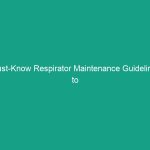Introduction
In the realm of industrial operations, welding stands out as one of the most common yet hazardous processes. The importance of Health, Safety, and Environment (HSE) measures cannot be overstated, particularly in workplaces where welding activities are performed. Each year, countless workers are affected by injuries and health issues resulting from unsafe welding practices, making it imperative for companies to prioritize Safety protocols. This article aims to illuminate essential welding guidelines that will help you avoid critical Safety risks, ensuring a safer working environment for everyone involved.
Regulatory Frameworks for Welding Safety
Understanding the regulatory frameworks governing welding safety is crucial for compliance and risk management. Various organizations establish guidelines that help ensure a safe working environment for welders.
OSHA Standards
The Occupational Safety and Health Administration (osha) plays a pivotal role in regulating safety standards in the United States. OSHA’s general industry standards mandate specific requirements for welding operations, including Personal Protective Equipment (PPE), ventilation, and fire Safety Measures. Compliance with OSHA Regulations not only enhances Workplace Safety but also minimizes the risk of legal repercussions due to non-compliance.
ANSI and NFPA Guidelines
In addition to OSHA, organizations like the American National Standards Institute (ANSI) and the National Fire Protection Association (NFPA) provide comprehensive guidelines regarding welding safety. ANSI standards focus on the technical aspects of welding processes, while NFPA guidelines stress the importance of Fire Prevention and Control Measures during welding operations. Familiarity with these standards is essential for both employers and employees to cultivate a culture of safety in the workplace.
Best Practices for Safe Welding
Implementing Best Practices in welding can significantly reduce the likelihood of accidents and health-related issues. Below are some key practices that should be adopted by every welding Operation.
Proper Training and Certification
One of the most critical factors in ensuring safety during welding is proper training and certification. Welders should undergo comprehensive training programs that cover both theoretical knowledge and hands-on practice. This training should encompass topics such as equipment operation, safety protocols, and emergency response Procedures. Regular refresher courses can reinforce skills and keep welders aware of the latest safety standards.
Use of Personal Protective Equipment (PPE)
The use of appropriate personal protective equipment (PPE) is non-negotiable in welding environments. Essential PPE includes:
- Welding helmets: Protects the eyes and face from sparks, heat, and harmful radiation.
- Gloves: Provides hand protection from heat and sharp objects.
- Respirators: Essential for preventing inhalation of harmful fumes and gases.
- Protective clothing: Flame-resistant clothing that covers the body adequately.
Employers should ensure that all welders have access to the required PPE and that it is maintained in good condition.
Maintaining a Clean Work Environment
A clean and organized workspace is vital for safety in welding operations. Cluttered areas can pose tripping Hazards and can contribute to accidents. Regular cleaning and Maintenance schedules should be established, ensuring that all tools and materials are stored correctly when not in use. Additionally, ensuring that flammable materials are stored away from welding operations can drastically reduce fire Hazards.
Proper Ventilation
Welding produces harmful fumes that can lead to respiratory problems if inhaled. Therefore, proper ventilation is critical. Employers should ensure that welding areas are well-ventilated, utilizing exhaust systems where necessary to remove hazardous fumes. In situations where natural ventilation is inadequate, local exhaust ventilation (LEV) systems should be installed to ensure a safe atmosphere for welders.
Common Welding Hazards and How to Mitigate Them
Despite best efforts, hazards can still arise in welding operations. Recognizing these hazards and implementing strategies to mitigate their risks is paramount for ensuring safety.
Electrical Hazards
Electrical hazards are prominent in welding, given the nature of the equipment used. Welders often work with high-voltage equipment, which can lead to electric shock or arc flash incidents. To mitigate these risks, it is vital to ensure that all equipment is properly grounded, and that welders are trained in Electrical Safety protocols. Regular inspections of equipment should also be carried out to identify any potential electrical faults.
Fire and Explosion Risks
Welding operations inherently carry fire risks due to the intense heat and sparks produced. To reduce the likelihood of Fires or explosions, it is essential to implement strict fire safety protocols. This includes maintaining a fire watch during and after welding operations, ensuring that fire extinguishing equipment is easily accessible, and training personnel on how to respond in case of a fire emergency. Furthermore, establishing a safe distance from flammable materials is critical.
Respiratory Hazards
The fumes generated during welding can pose serious health risks, including lung disease and other respiratory issues. To mitigate these hazards, employing appropriate ventilation solutions is crucial. Additionally, providing welders with respirators designed to filter out harmful particles can significantly reduce exposure to toxic fumes. Regular health checks should also be conducted to monitor the respiratory health of welders.
Burns and Eye Injuries
Burns and eye injuries are among the most common injuries in welding. To prevent these injuries, it is essential to ensure that all welders are equipped with the appropriate PPE, especially welding helmets and flame-resistant clothing. Training welders on safe work practices, such as maintaining proper distances from the welding arc and avoiding direct exposure to bright light, can also help mitigate these risks.
Case Studies: Lessons Learned from Welding Accidents
Analyzing past welding accidents can provide valuable insights into how to improve safety practices. Here are a couple of case studies that underscore the importance of adhering to Safety Guidelines.
Case Study 1: The Importance of Ventilation
In a manufacturing plant, a welder suffered from severe respiratory issues after working in a poorly ventilated area without appropriate PPE. The lack of ventilation led to the accumulation of toxic fumes, resulting in a health emergency. Following this incident, the company implemented a thorough review of their ventilation systems and established mandatory PPE protocols for all welding operations. This incident highlights the critical importance of proper ventilation and PPE in maintaining health and safety in welding environments.
Case Study 2: Fire Risks in Welding
Another incident occurred in a construction site where a welder ignited nearby flammable materials due to a lack of fire safety protocols. The resultant fire caused significant property damage and injuries to workers. In response, the company revised its fire safety procedures, including mandatory fire watch personnel during welding tasks and regular fire safety training for all workers. This case serves as a reminder that fire risks can be effectively managed through proper training and adherence to safety protocols.
Challenges in Implementing Welding Safety Measures
While the importance of welding safety is widely recognized, several challenges can impede the implementation of effective safety measures. Understanding these challenges can help organizations develop strategies to overcome them.
Cost of Safety Compliance
One of the primary challenges organizations face is the cost associated with implementing safety measures. Investing in training, PPE, and up-to-date equipment can be financially burdensome, particularly for small businesses. However, it is essential to view these costs as investments in employee well-being and organizational productivity. The long-term Benefits of reducing accidents and health issues far outweigh the initial costs.
Employee Resistance to Change
Another challenge is employee resistance to new safety protocols. Some workers may feel that existing practices are sufficient or may be reluctant to adopt new methods. To address this, effective communication is key. Involving employees in the development of safety protocols can foster a sense of ownership and encourage adherence. Regular training sessions and open discussions about the importance of safety can also help ease the transition to new practices.
Keeping Up with Evolving Regulations
The landscape of safety regulations is constantly evolving, making it challenging for organizations to stay compliant. To navigate this, companies should designate a safety officer responsible for keeping abreast of regulatory changes and ensuring that the organization adapts accordingly. Additionally, participating in industry associations can provide valuable resources and updates on Best Practices and regulations.
Future Trends in Welding Safety
The field of welding is continuously evolving, and with it, the approaches to safety are also advancing. Here are some trends that are likely to shape the future of welding safety.
Increased Use of Technology
Technology is playing an increasingly significant role in enhancing welding safety. Innovations such as remote monitoring systems and advanced PPE equipped with sensors can provide real-time data on environmental conditions and worker safety. This technology can help organizations respond quickly to potential hazards, ultimately reducing the risk of accidents.
Emphasis on Mental Health and Well-being
There is a growing awareness of the impact of mental health on worker safety. Stress and burnout can lead to decreased attention and increased accident rates in welding operations. Companies are beginning to implement programs that focus on mental well-being, offering resources such as counseling and stress management training. This holistic approach to safety recognizes that a healthy mind contributes to a safer workplace.
Sustainability in Welding Practices
As industries move towards more sustainable practices, welding operations are also adapting. This includes using eco-friendly materials and processes that minimize waste and reduce environmental impact. Companies that prioritize Sustainability in their welding practices not only enhance their reputation but also contribute to a safer and healthier environment for their workers.
Conclusion
Ensuring safety in welding operations is a multifaceted challenge that requires dedication, training, and adherence to established guidelines. By understanding the regulatory frameworks, implementing best practices, recognizing common hazards, and learning from past incidents, organizations can create a safer working environment. The future of welding safety looks promising, with technological advancements, a focus on mental health, and sustainable practices leading the way. It is essential for every stakeholder in the industry to embrace these changes and prioritize safety to protect the well-being of all workers. Remember, a commitment to safety is a commitment to excellence in welding.


